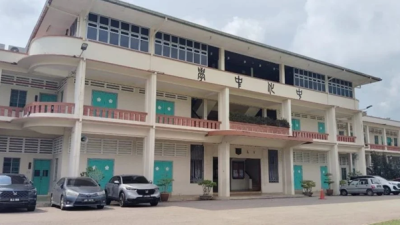
On Monday, the ringgit fell to a low of 4.79 to the greenback, the lowest since the regional financial crisis 25 years ago. Meanwhile, the local currency also headed south against Singapore dollar at a historical low of 3.489.
Both these two are major psychological barriers, and we cannot afford to ignore the trend if we don’t want the ringgit to slide further.
Bank Negara governor Abdul Rasheed Abdul Ghaffour said the Malaysian economy had yet to plunge into a crisis despite the continuous downtrend of the ringgit. However, he said the government would implement several measures to support the national currency.
The thing is, if we have not reached a crisis level, why support the ringgit?
Abdul Rasheed said ringgit was not the only currency that depreciated, as almost all other major currencies had fallen against the greenback. Indeed that is the case, but the local unit has also been falling by 20 to 30 percent against the currencies of Taiwan, Singapore, Thailand and China in recent years.
The central banker said Malaysia’s economic fundamentals, external trade, as well as the country’s financial system had remained strong and could provide the necessary financing for the country’s development.
He also said there was no problem with the country’s financial system, given our robust economic growth and the stabilized inflation. As such, the movements of the ringgit have been dictated wholly by the external environment.
The thing is, this is very much the situation at this moment, but where are the so-called “measures” to tackle the ringgit’s fall? That’s all pep talk and no action on the part of Bank Negara!
We hope Bank Negara will come up with some robust monetary policy to bring the ringgit exchange rates to more rational levels. Perhaps the authorities should set a baseline for the ringgit, either at 1:3.8 or 1:4.5 or even 1:5.
Perhaps the central bank is worried setting a baseline will invite international currency speculation due to our shrinking foreign reserves insufficient to lend further support to the local currency.
We must come to terms with the reality that a stable currency exchange rate is akin to a formidable financial security firewall. As such, the central bank has the obligation to formulate a stabilization policy instead of making empty talks.
Firstly, the monetary policy. Once the ringgit exchange rate has dropped below the permissible lower limit of fluctuation, the central bank must attempt to bring down the interest rate in order to increase the money supply.
Bank Negara will have to come up with workable solutions to at least keep the ringgit at more rational levels. Talks alone will not help check the freefall of ringgit.
Secondly, foreign reserves. Bank Negara should flexibly use the foreign reserves to balance out the foreign exchange supply-demand relationship through exchange market intervention. But one big problem the country is facing now is low foreign reserves.
Thirdly, exchange control. This is an important maneuver to stabilize the ringgit’s exchange rates against the US dollar and other foreign currencies. Given the drastic plunge of the ringgit exchange rates during the regional financial crisis some 25 years ago, Tun Mahathir decisively enforced the capital control mechanism as a provisional measure to stop the sharp decline of ringgit.
Although Malaysia is not currently experiencing any severe irregularity in balance of payments or rapidly depleting foreign reserves, we have nevertheless been unable to effectuate exchange market intervention to stabilize the local currency. The Bank Negara has said the country has not reached a stage where capital control mechanism is warranted.
We need to do more than just talking. Uncontrolled freefall of ringgit is set to bring negative reverberations in the long run.
Firstly, middle-income trap. When production cost goes up, the country will lose its export competitiveness to countries offering significantly lower production costs, while unable to make it to the league of developed nations.
Due to ringgit depreciation, our per capita GDP has been lingering round the middle-income $11,000 level for quite some years now. If the ringgit were traded at 3.80 to the greenback, our per capita GDP could have breached the $13,900 threshold for a high-income economy!
Secondly, inflation. Inflationary pressure will pick up following rise in the cost of imports as a consequence of ringgit devaluation. 30 percent of domestic rice consumption from imports, flour, agrochemicals, IT products (smartphones, laptops), E&E products, automobiles, processed foods, construction materials, air tickets, foreign university tuition fees, etc., will all experience dramatic price increases.
Thirdly, the myth of currency depreciation favoring exports. Will a lower ringgit be a boon to the export sector? Yes and no. This is because we rely heavily on imported materials or parts for many of our export-oriented manufactured goods.
Fourthly, lower currency encourages brain drain, prompting many young Malaysians to seek greener pastures elsewhere for more rewarding remunerations and prospects.
Fifthly, we will never earn enough because of inflation. As a result, the government will have to keep increasing the incomes of civil servants or handing out assistances, allowances and subsidies (e.g., fuel and utility) to address the problem of poverty. This will forever sink the country into the quagmire of swelling operating expenditure vis-à-vis development expenditure, thus limiting the country’s development potential.
It is by no means an easy task to stabilize the ringgit exchange rates. In view of this, Bank Negara must come up with workable solutions to at least keep the ringgit at more rational levels. Talks alone will not help check the freefall of ringgit.
We do not want to see the local unit breach the disastrous 5.0 barrier and beyond!
ADVERTISEMENT
ADVERTISEMENT


































